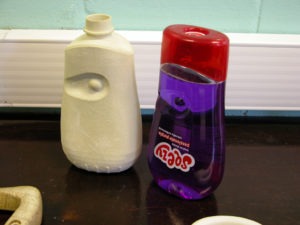
- You’ll be able to touch, feel, and manipulate your item. This will help you make design choices or see if there are any problems inherent in the design that you couldn’t see in your napkin sketch.
- You’ll be able to find out if your item is really feasible. Will it really work?
- If it doesn’t work, you’ve “failed early and inexpensively.” Because our prototyping services are cheaper than our competitors’, starting off with a bad design won’t hurt your bank account.
- You can fully explore your design. Some people have trouble visualizing ideas in 3D, so having a prototype can help your design process.
- You can get your item made in several different materials to test out which would be best for production.
- You have time to see which type of finish works with your item…even if it wasn’t in your original design.
- You can let your target market test it out too—if you’re designing a super cool new toy, let the neighborhood kids play with it to get their feedback.
- With a prototype, you have time to take your data and create a revised and improved product design.

Prototype next to its final design / photo by Jordanhill School D&T Dep - With your prototype, you can confidently approach investors for financial backing because you can easily show them why your idea is worth their money. But, if business people aren’t your thing, you can take your prototype to Kickstarter to get grassroots support to raise your needed funds.
- Having a partly- or fully-functional prototype can help you get your design patented. Investors love to hear that you have a patented (or at least patent-pending) design because it means no one can steal your idea…or, by extension, their money.



